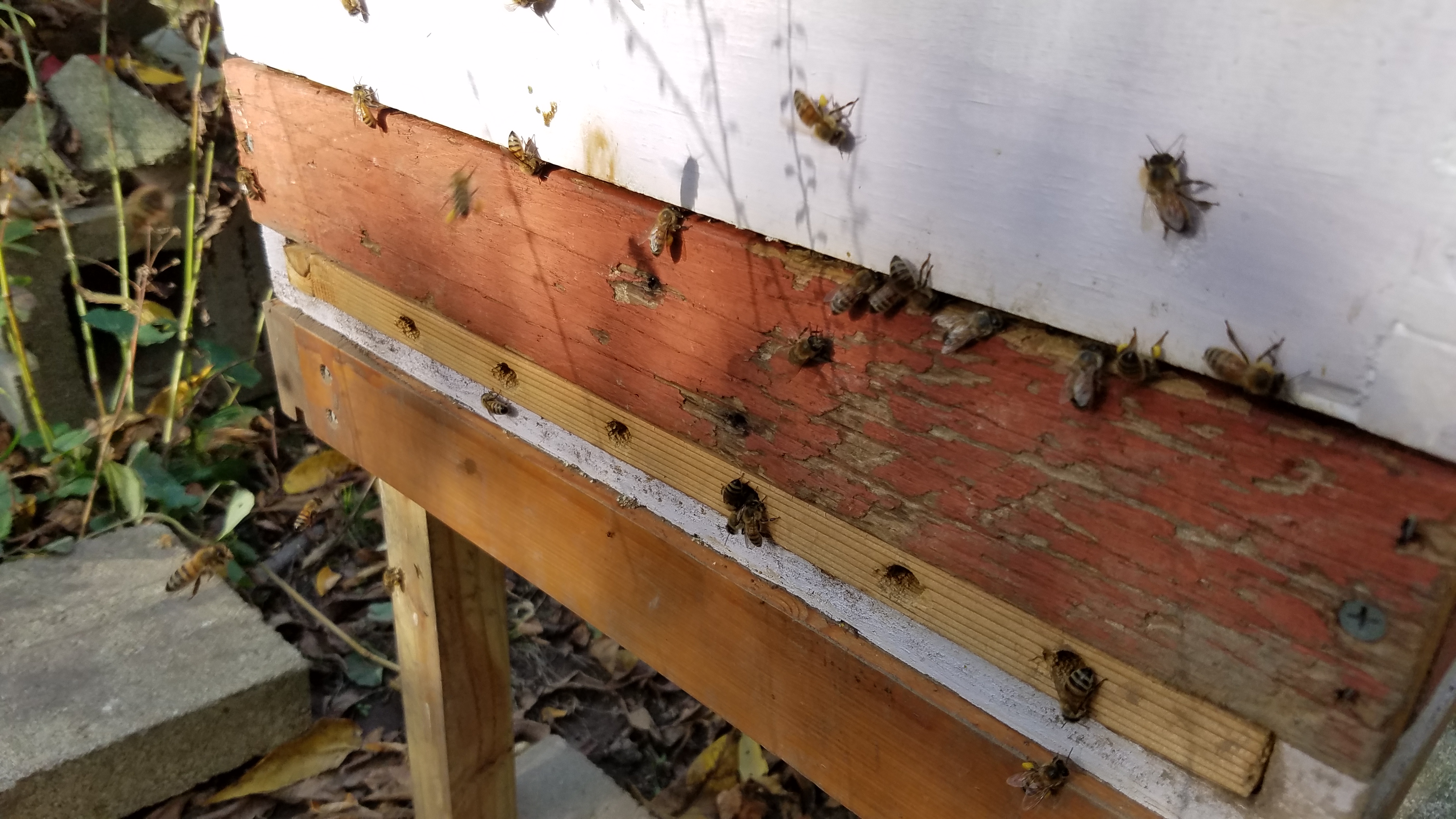
With beekeeping it is good to start to think about Winter in September. Some people would say to start thinking about it in August, and they are probably right. In someways it also depends on the weather too. Knowing where you bees are in their stores and overall strength is really what is important.
For preparation of the hives we combine a few concepts that we have set up for year round. First is that we have a screened top cover. I built these so I could place insulation in them for the winter and in the summer they allow for a bit of ventilation in the hive. The goal is to minimize the amount of equipment and meet the needs of the bees. For example one of the things that I am interested in trying in the near future is looking into building some hives like Sam Comfort does.
He takes rough cut one by six and cuts them into 12 inch lengths then simply buts them together and places a screw inside them. As he shares in quite a few of his videos this is what wild bees nests would look like. He is looking at the science based on Tom Seeley's work and trying to mimic what honey bees do in nature. It would seem that this would be a smart thing to do as if the bees that are living on their own in nature are able to live with the natural stress of living in the wild then certainly they will be more likely to live is a semi-domesticated state inside of an apiary.
So as I prep for the winter I think about how I can add some insulation to prevent condensation from falling onto the bees from the roof of the hive. So I pack the top cover with a bit of wood shavings and some rags. It also allows me if I need to feed them some dry sugar late in the season the ability to place some on the top bars of the hive. Then it is simply installing a mouse guard to prevent a field mouse from stowing away inside the hive for the winter. Once that is done I simply walk away until I have a nice day later in the winter to see how they are doing. Each fall as I set this up I think about what could I have done better. For example this year I think I may have lost two hives either to some late swarming or simply I hadn't treated them for mites soon enough. This is the other thing that I want to mimic from Sam Comfort and some of the other bee keepers out there. I want to eventually build an apiary that I don't have to treat with chemicals. To me it seems that building upon genetics and the natural cycle of the bee will be the better way to go in the long run. Currently I am using some naturally occurring chemical treatments that are supposed to knock down the mite count, but eventually raising bees that deal with the mites on their own would be even better. This is my hope and if I can catch feral bees in my area my thought is that they may have some of this behavior already.
All if this relates to prepping for the winter because having stronger healthier well fed bees will make them more prolific in the spring and actually be able to produce a crop of honey by the end of the summer. There is this constant give and take between doing something that provides a honey harvest to the beekeeper and ensuring that you have healthy bees that will be around for the next spring. So until the next opportunity to check in on the bees it will be working in the basement building bee equipment for the spring.

Comments